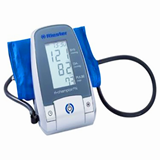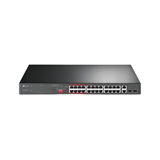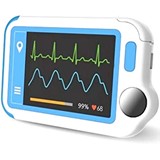A new generation of battery-powered wearable wireless sensors that can link to smartphone-based 'apps' is about to explode onto the market, according to analyst ABI Research.
The ability to monitor activity data such as heart rate and speed or vital medical signs like blood-pressure and -glucose level has been a feature of coin-cell powered wireless sensors for some time, but the use of proprietary technology has limited their use to niche applications.
Now, the introduction of a new variant of the short-range wireless technology, Bluetooth, under the consumer branding of "Bluetooth Smart", allows these ultra low-power devices to connect directly to the latest generation of Bluetooth-equipped smartphones, tablet computers and PCs. Once the user’s data has been transferred to the mobile device or computer it can be shared with friends, colleagues or health care professionals via the cellular network or the Internet.
According to ABI Research, this new functionality has encouraged many companies to join the traditional high-end vendors such as Polar and Garmin, and launch wearable wireless sensor products. Nike, Adidas and Motorola are among the companies that have entered the market and the research firm says plenty more mobile handset accessory vendors, consumer electronics companies, fitness management service firms and online services providers are about to follow.
"Leveraging mobile handsets to provide automated online data access opens up the wearable wireless market to real-time online connectivity," Jonathan Collins, a Principal Analysts with ABI Research said.
"Although not the only option, standardisation around Bluetooth Smart will be the bedrock of this market growth."
The company notes that the new wave of wearable devices coming to market will help track and share data from a range of activities and conditions. These devices, for example, will record the pace of someone’s daily run, recognise a fall that might have injured an elderly person, report the blood glucose level of a diabetic or monitor the heart rate of a hospital patient.
ABI Research forecasts the annual market for wearable wireless devices will grow to 169.5 million devices by 2017, up from 20.77 million in 2011, a compound annual growth rate (CAGR) of 41 per cent. While the bulk of the device shipments will be in the consumer sports, fitness, and wellness market, wearable devices will increasingly be adopted across home monitoring and healthcare service applications.
"Remote patient monitoring and on-site professional healthcare use will represent just over 20 per cent of the wearable wireless device market by 2017, up from less than half that in 2011," Collins noted
"As the devices can be worn and can upload collected data to the network automatically, collected data can not only be more regularly collected but also shared, analysed, and acted on quicker and more efficiently that existing wired or manpower-laden techniques."
While consumers are enthusiastically embracing wearable wireless sensors, industrial applications are rare, but the sector has been quicker to adopt battery-powered stationary sensors for monitoring temperature, humidity and vibration in factories and processing plants.
The most popular is ZigBee, a short-range wireless technology employing "nodes" that form "self-configuring and self-healing" wireless mesh networks which are robust enough for industrial use
ZigBee adheres to an industry-standard communication protocol ensuring equipment from different manufacturers interoperates. Companies such as Castle Hill, NSW-based T Data supply networks adapters to connect the ZigBee mesh to longer-range Wireless Local Area Networks (WLAN) and from there to cellular infrastructure or the internet.
- Suppliers
- New to MedicalSearch? Book a Demo
- Advertise with us
- Login
- Email Marketing
- Buyers
- Get Quotes
- Articles & Ideas
- Login
- Subscribe to newsletter
- My Details
- Get Quotes
- Accident & Emergency Care
- Aged Care & Disability
- Anaesthesia & Respiratory Care
- Beauty & Wellness
- Cardiology & Cardiac Surgery
- Commercial Cleaning & Laundry Supplies
- Dental Care & Oral Surgery
- Diagnostic Instruments & Medical Imaging
- Disinfection & Sterilisation
- ENT & Audiology
- Gynaecology & Obstetrics
- Homecare & Consumer Medical
- Hospital Equipment & Supplies
- Intensive Care Unit
- Laboratory & Pathology
- Medical Apparel
- Medical Devices & Products
- Medical Fridges & Freezers
- Medical Storage & Filing
- Medical Waste Management
- Optometry & Ophthalmology
- Orthopaedics & Podiatry
- Paediatrics & Neonatology
- Patient Monitoring & Management
- Physiotherapy & Rehabilitation
- PPE & Infection Control
- Single Use Medical Consumables
- Surgical Tools & Supplies
- Treatment Beds, Tables & Couches
- Veterinary Equipment
- Wheelchairs & Mobility Aids
- Get Quotes
- Accident & Emergency Care
- Aged Care & Disability
- Anaesthesia & Respiratory Care
- Beauty & Wellness
- Cardiology & Cardiac Surgery
- Commercial Cleaning & Laundry Supplies
- Dental Care & Oral Surgery
- Diagnostic Instruments & Medical Imaging
- Disinfection & Sterilisation
- ENT & Audiology
- Gynaecology & Obstetrics
- Homecare & Consumer Medical
- Hospital Equipment & Supplies
- Intensive Care Unit
- Laboratory & Pathology
- Medical Apparel
- Medical Devices & Products
- Medical Fridges & Freezers
- Medical Storage & Filing
- Medical Waste Management
- Optometry & Ophthalmology
- Orthopaedics & Podiatry
- Paediatrics & Neonatology
- Patient Monitoring & Management
- Physiotherapy & Rehabilitation
- PPE & Infection Control
- Single Use Medical Consumables
- Surgical Tools & Supplies
- Treatment Beds, Tables & Couches
- Veterinary Equipment
- Wheelchairs & Mobility Aids
Trusted by 520,000 Australian medical buyers
Buyers
- Discover products & solutions
- Login
- Subscribe To Newsletter
- Browse All Products
- Read Articles
Suppliers
Advertise
- Promote your products & solutions
- New to MedicalSearch? Book a Demo
- Login / Forgot Password
- Advertise Your Products
- Success Stories
- Email Marketing
- Suppliers
- Advertise with us
- Login
- Email Marketing
- Buyers
- Get Quotes
- Articles & Ideas
- Login
- Subscribe to newsletter
- My Details
Get Quotes
- Accident & Emergency Care
- Aged Care & Disability
- Anaesthesia & Respiratory Care
- Beauty & Wellness
- Cardiology & Cardiac Surgery
- Commercial Cleaning & Laundry Supplies
- Dental Care & Oral Surgery
- Diagnostic Instruments & Medical Imaging
- Disinfection & Sterilisation
- ENT & Audiology
- Gynaecology & Obstetrics
- Homecare & Consumer Medical
- Hospital Equipment & Supplies
- Intensive Care Unit
- Laboratory & Pathology
- Medical Apparel
- Medical Devices & Products
- Medical Fridges & Freezers
- Medical Storage & Filing
- Medical Waste Management
- Optometry & Ophthalmology
- Orthopaedics & Podiatry
- Paediatrics & Neonatology
- Patient Monitoring & Management
- Physiotherapy & Rehabilitation
- PPE & Infection Control
- Single Use Medical Consumables
- Surgical Tools & Supplies
- Treatment Beds, Tables & Couches
- Veterinary Equipment
- Wheelchairs & Mobility Aids
Get Quotes
- Accident & Emergency Care
- Aged Care & Disability
- Anaesthesia & Respiratory Care
- Beauty & Wellness
- Cardiology & Cardiac Surgery
- Commercial Cleaning & Laundry Supplies
- Dental Care & Oral Surgery
- Diagnostic Instruments & Medical Imaging
- Disinfection & Sterilisation
- ENT & Audiology
- Gynaecology & Obstetrics
- Homecare & Consumer Medical
- Hospital Equipment & Supplies
- Intensive Care Unit
- Laboratory & Pathology
- Medical Apparel
- Medical Devices & Products
- Medical Fridges & Freezers
- Medical Storage & Filing
- Medical Waste Management
- Optometry & Ophthalmology
- Orthopaedics & Podiatry
- Paediatrics & Neonatology
- Patient Monitoring & Management
- Physiotherapy & Rehabilitation
- PPE & Infection Control
- Single Use Medical Consumables
- Surgical Tools & Supplies
- Treatment Beds, Tables & Couches
- Veterinary Equipment
- Wheelchairs & Mobility Aids
Trusted by 520,000 Australian medical buyers











